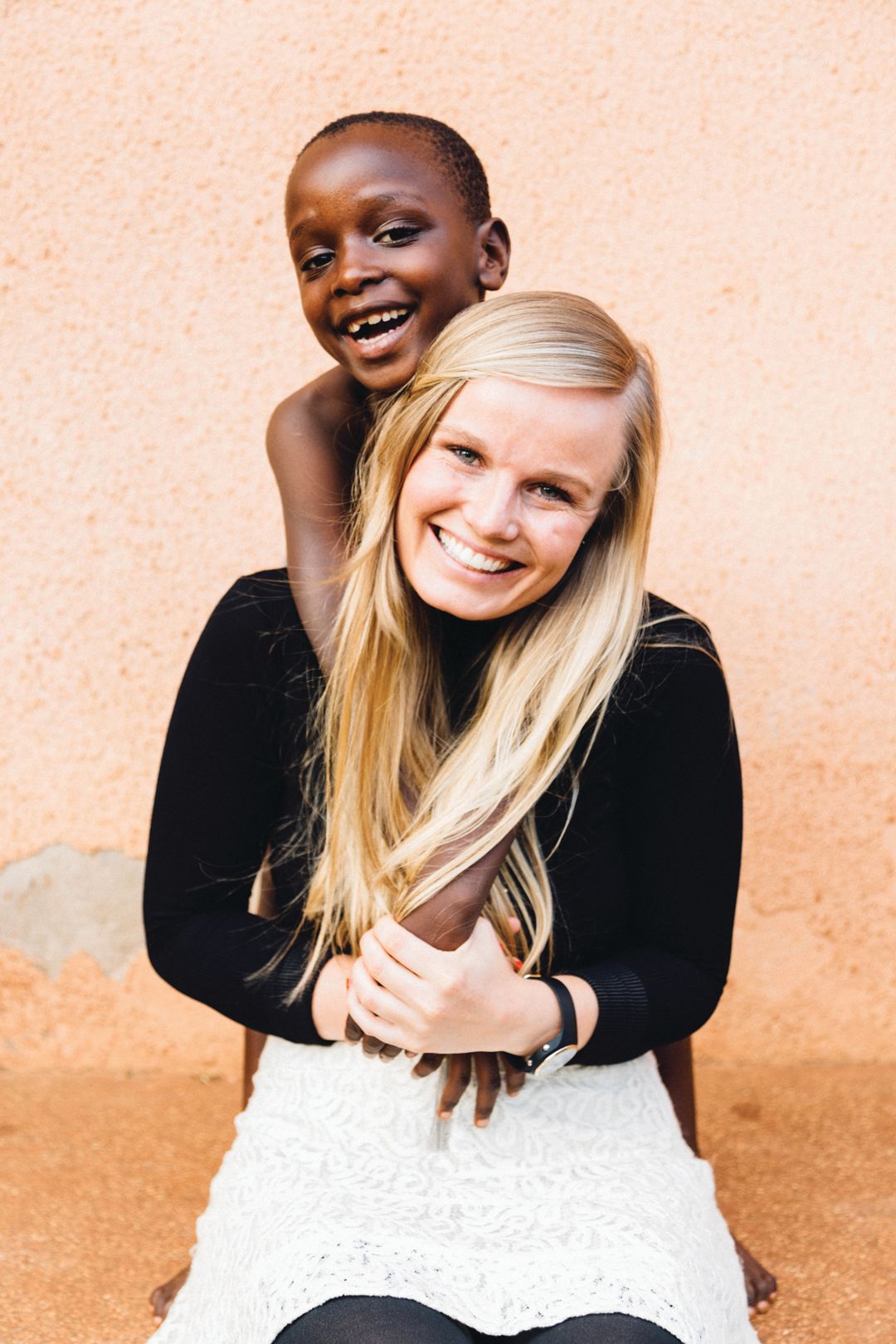A Q&A with Action in Africa's Founder Sarah Nininger

Sarah Nininger in Uganda with Jazil, 7
Image: Mackenzie Benton
Aspen Sojourner: You founded Action in Africa (AIA) 11 years ago when you were a student at Aspen High School. Where does your incredible philanthropic spirit come from?
Sarah Nininger: My older brother has cerebral palsy, and I grew up going to occupational, speech, and physical therapies with him. That exposed me to kids with different disabilities. I became super passionate very early on about being in and building an intentional community with people different than me.
AS: How did that turn into starting your own nonprofit?
SN: A pivotal time during my high school years was my parents’ divorce. I had a lot of anger and sadness, and I needed to channel that energy. My best friend and I saw a film from Invisible Children about child soldiers in Uganda, and it shook our world. It was that moment when we realized that, regardless of our circumstances, we still had so much to be grateful for.
AS: So AIA began as a student club, fundraising for Invisible Children (which helps protect families in central Africa from threats of violence, most famously Joseph Kony’s Lord’s Resistance Army) as well as some other nonprofits in Africa.
SN: We started out raising funds and collecting supplies for them. We threw our first benefit—a concert with Run DMC—in 2008 and officially became a nonprofit in 2010. Invisible Children played a huge part in what we do, why we do it, and where we do it.
AS: What are AIA’s primary objectives?
SN: The goal is to provide sustained education in Uganda. Our first major project was building the Aspen Community Children’s Library outside of Kampala. A lot of funds have also gone to medical outreach and to sponsor scholarships for children. For students Stateside, it’s about empowerment by being involved in a cause that’s bigger than themselves.
AS: And you continue to involve Aspen High students in AIA’s work through fundraising, supply collection, and annual service trips.
SN: It’s been such a powerful experience to see the students transition from just writing a check once a year to actually going to Uganda. Since we started, we’ve sent close to 300 Aspen High students, board members, and community leaders there. This year, our third annual AIA winter fundraiser is December 22 at Aspen Kitchen.
AS: What was it like going to Uganda in 2008?
SN: That’s when I decided to really go all in, after meeting the kids, seeing the schools, and hearing their stories.
AS: Did that experience affect your plans after graduation?
SN: Absolutely. I always knew I wanted to do something in education. When I started at Chapman University, they had just launched the Integrated Educational Studies program. Instead of traditional teaching in the classroom, it’s more focused on nonprofit management. I was one of the first students to graduate with that degree, which just reaffirmed that I was doing exactly what I was supposed to be doing … and still am.
AS: There’s a quote on your website—“If you want to go fast, go alone. If you want to go far, go together.” What does that mean to you?
SN: We do everything slowly, which is arguably why we’re really good at what we do. Another philosophy we implement in our fundraising strategy is that “it takes a village to raise a village.” Aspen is our village—the community that’s made all of this possible.
AS: What has been AIA’s biggest success so far?
SN: People often ask, “How many kids do you sponsor or how many schools have you built?” and they want quantitative answers, but I’m like, “Let me tell you about Mary.” One of the kids we first started working with 10 years ago, Mary just graduated from high school and now works for us full-time, overseeing a program that feeds 600 kids a day while saving money so she can put herself through university.
AS: The opening of the Center, AIA’s home of its own in Nakuwadde, Uganda, is a pretty major achievement, too.
SN: It opened in 2014, and it’s now completely self-sufficient, serving up to 500 people a day through daily, creativity-based after-school programs for kids in the village. We offer weekly programs for adults, too. We have 11 full-time Ugandan employees and 19 contract and part-time workers.
AS: You lived and worked in Uganda for the past three-and-a-half years. What’s next?
SN: I’m relocating to Washington, DC. It’s strategic for us to be in a nonprofit and international relations hub. We also just formed a partnership with Gucci and received full sponsorship of our scholarship program for 95 Ugandan high school students. Locally, we’re working on starting a club at Basalt High School and a community development initiative among Roaring Fork Valley Rotary clubs.
Support Action in Africa in Aspen at its 3rd annual Winter Fundraiser on December 22 at Aspen Kitchen (5 p.m.) hosted by Dakota Johnson and sponsored by Gucci, Tesla, EKS Events, and Aspen Sojourner magazine. For more information and to purchase tickets (from $50), visit actioninafrica.com.













































